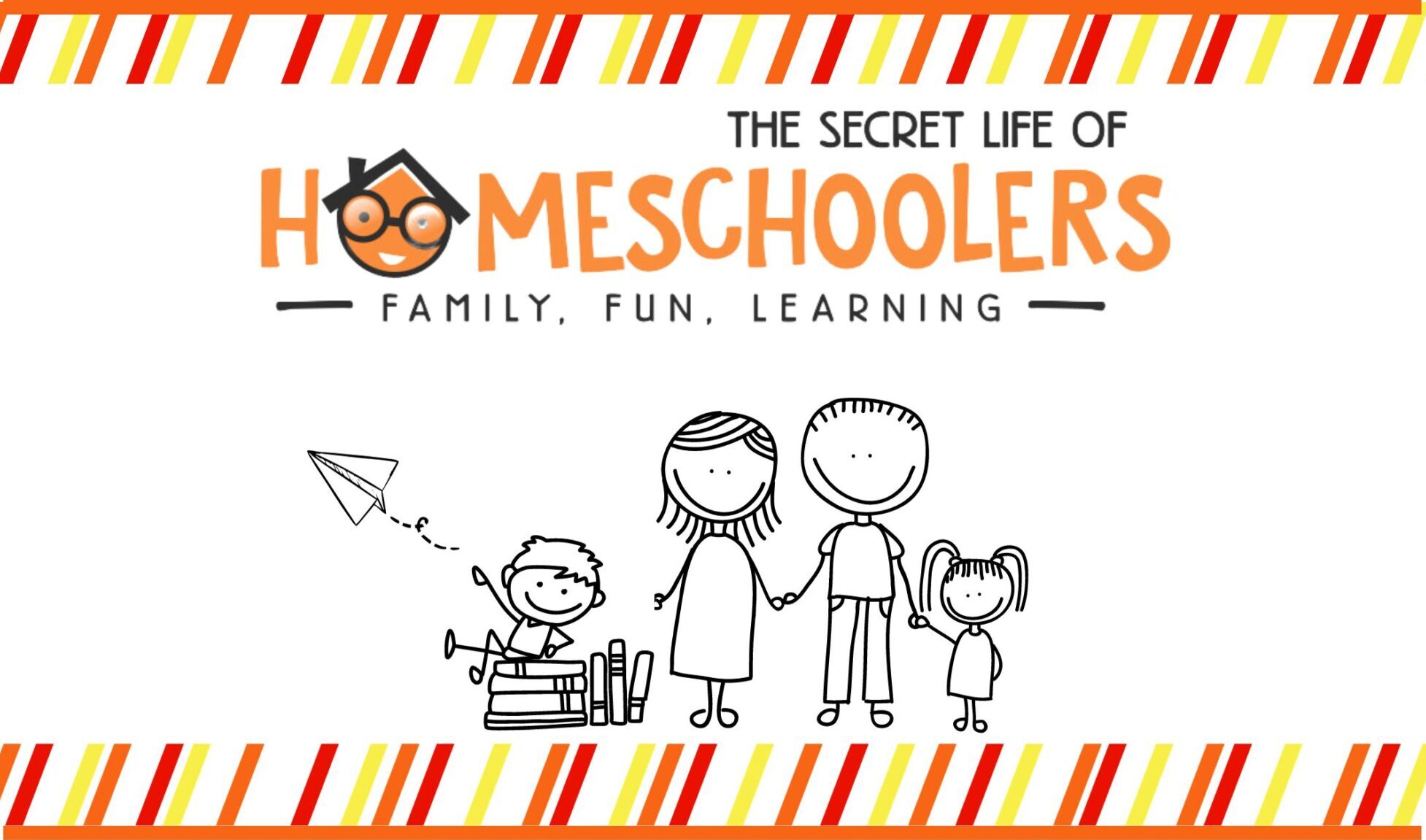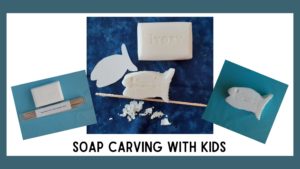So many things come to mind when I think of fall. I think of frosty mornings, bright-colored leaves, giant orange pumpkins, and scarecrows. Now, scarecrows are out in farmers’ fields in the summer but pop up in full force during fall for decorations (which I LOVE). So, I thought, why not have some fun with a little scarecrow STEM activity?
Scarecrows are a fun decoration for fall. I used to make them with my preschoolers, and they loved it. It was fun to add a fall feel to our classroom and out on the porch.
However, scarecrows do have a purpose. Any farmer or home gardener knows you must keep the birds and other pests out of your vegetables, or you won’t have any.
I know. I once chased a porcupine out of my corn one night in my pajamas. That little stinker wasn’t stealing my corn.
So, while scarecrows are all around, why not explore STEM (Science, Technology, Engineering, and Mathematics) concepts in a fun and hands-on way using scarecrows?
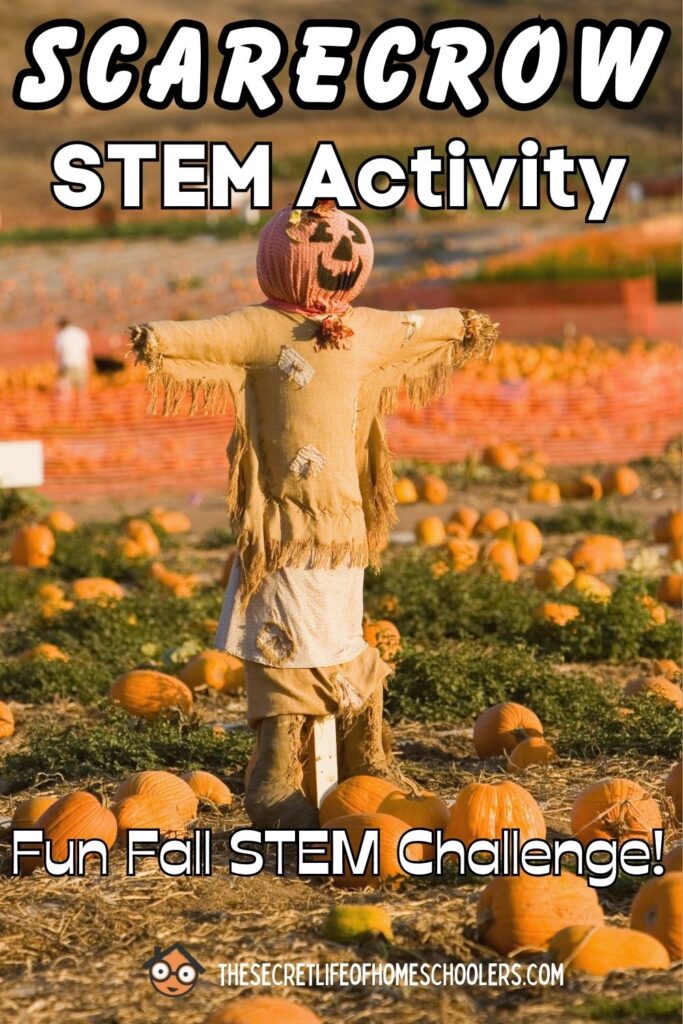
Table of Contents
- Why Scarecrow STEM
- How to Begin Your Scarecrow STEM Activity with Kids
- Younger Kids and Scarecrows
- Scarecrow STEM Fun
Why Scarecrow STEM
Scarecrows are not just great at scaring birds away; you can use them for STEM principles that can be fun and educational to explore. Here are a few reasons why scarecrows make an excellent choice for STEM activities:
- 1. Multidisciplinary Approach: Scarecrows involve elements of biology (understanding bird behavior), engineering (constructing the scarecrow), physics (balancing the scarecrow), and even a touch of art and creativity (so maybe it is STEAM???).
- 2. Real-World Application: Scarecrows are actually something people use in the real world. So, scarecrow STEM activities have a real connection that makes STEM concepts more relatable and engaging for students.
- 3. Hands-On Learning: Building a scarecrow is a hands-on activity that allows students to apply what they’ve learned to a practical situation. So many kids thrive with a hands-on learning approach.
Before you get started, check out this interesting article on some fun history about scarecrows. It shares how ancient cultures and even medieval times used them.
Well, let’s get started with this scarecrow STEM activity. You can try this with your students, kids, or even as a fun family project!
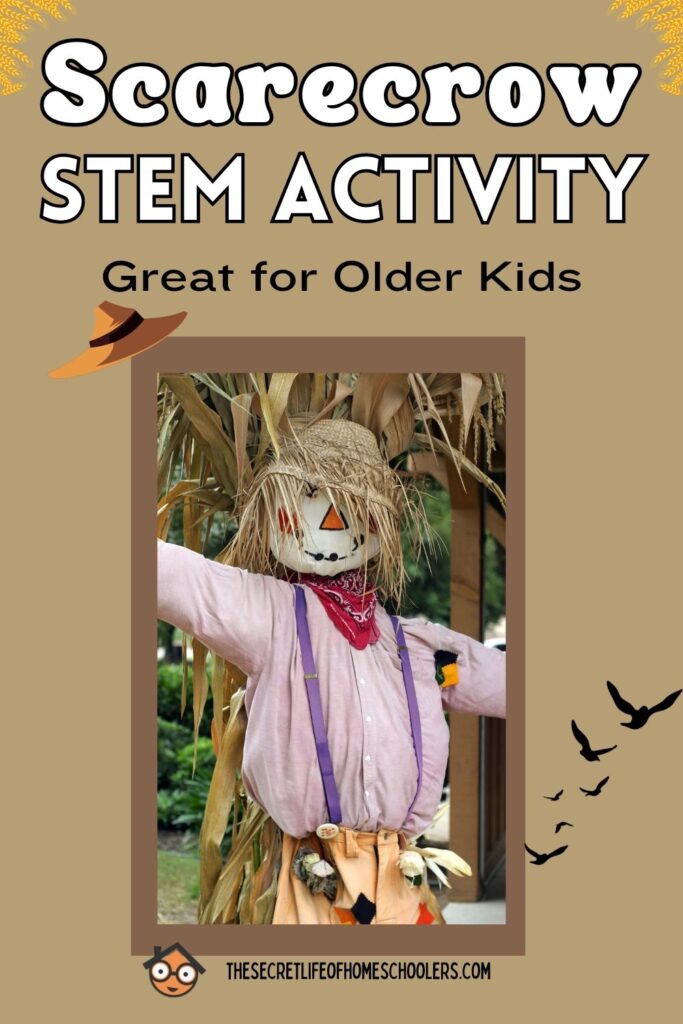
How to Begin Your Scarecrow STEM Activity with Kids
There are a variety of STEM concepts that are actually covered with something as simple as a scarecrow. You really can incorporate science, technology, engineering, and math.
However, if you incorporate all of the areas of STEM, you may want to do this scarecrow activity with older kids. Probably mid-elementary level and up.
If you are doing this as a group project, you can adapt it or make it simpler for younger kiddos.
So, let’s get started.
1. The Bird Behavior Investigation
To start your scarecrow STEM journey, you need to start by studying birds, specifically bird behavior. Here is where science comes in.
If you can, take the kids outside with binoculars and a notebook and head to a field or garden to observe birds in action. This would be ideal.
Have kids pay attention to what the birds are eating, how they fly, and the types of crops they might be going after.
Don’t have any gardens nearby?
No problem. Observe bird behavior however, you can, even in your backyard. It will be even better if you have a feeder or flowers that attract birds to the yard. This way, kids can have a starting point when they begin researching more about birds.
Through observations and by doing some online research (technology), kids will look into:
- Why do birds go after certain crops?
- Do birds prefer specific times of day to search for food?
- How do birds communicate danger to one another?
- What frightens birds? Movement? Noise? Etc.
Encourage your kids to record their observations and any research they completed, then discuss what they found out.
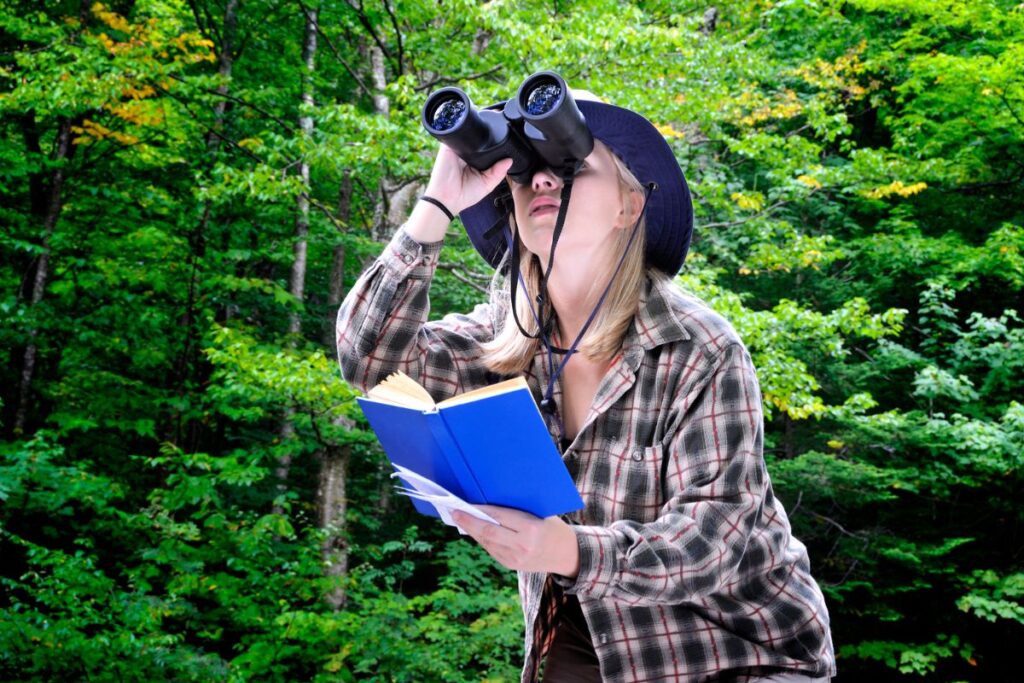
This activity will build critical thinking and encourage students to make connections between their observations and the purpose of a scarecrow.
If you need information on the purpose of scarecrows and how to make sure to build an effective scarecrow, take a look at this article.
Also, here is a video that goes into the background of scarecrows and how they are used.
2. Scarecrow Design and Engineering Challenge
Once you’ve learned something about bird behavior, it’s time to put your engineering hats on! Challenge your kids to design and build their scarecrow. Here’s how you can set up the activity:
Materials needed:
- Sturdy wooden or metal frame (for the scarecrow’s body). If you have scouts, maybe they can lash something together.
- Old clothes or burlap sacks (for the scarecrow’s clothing)
- Straw or hay (for stuffing). Though, leaves can work too, and you get some raking done.
- Rope or twine (for securing the clothing)
- A pole or stake (for support)
- Hammer and nails (for construction)
- Paints, markers, or other art supplies (for decorating)
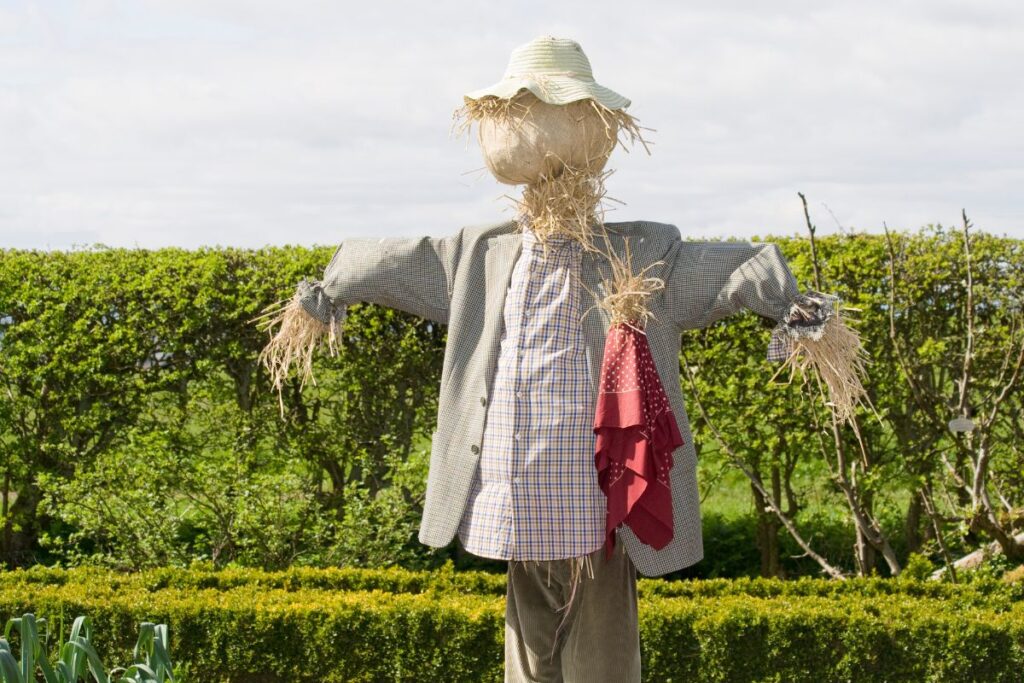
Instructions:
1. Start by discussing the purpose of a scarecrow and what it needs to include so it is effective. Does it need to make noise, move, or look a certain way? (Refer to this article if you need help.)
2. You can divide the kids into teams or work on it all together. If you have a large group, I’d split them up if you can.
3. Challenge them to design and build a scarecrow that can hold up to wind and rain while effectively scaring away those pesky birds.
4. Encourage creativity in designing the scarecrow’s face and clothing. Students can get as artistic as they like!
5. Want to add more of a challenge and add in technology? Look into motion sensors! Introduce basic electronic components like motion sensors or light detectors for older kids. Challenge them to build a scarecrow that can move or make noise when a bird or pest is detected nearby.
This activity teaches engineering principles like stability and structure. It also encourages teamwork and problem-solving as students work together to build their scarecrow.
Need help planning out your STEM activity? Take a look at this STEM journal. It walks kids through the STEM process.
You can find a black-and-white version HERE.
3. Scarecrow Math: Measuring and Estimating
How does math come into play?
You add math to your scarecrow STEM activity by incorporating measurements and estimations. Ask your kiddos to make various calculations and estimations related to the scarecrow-building process:
- Measure the height of the scarecrow and discuss how different heights might affect its effectiveness. You can also have kids measure and calculate their scarecrow’s ideal height, arm length, and head size based on the garden size it will protect.
- Estimate the amount of straw or hay needed to stuff the scarecrow’s clothing.
- Calculate the length of rope or twine required to secure the clothing to the frame.
- Estimate the total cost of materials used in building the scarecrow.
This is the perfect time to discuss ways to help make good estimates. The kids can see if, over time, they start making better estimates.
You can adapt the math challenges to suit different age groups, making this activity suitable for a wide range of learners.
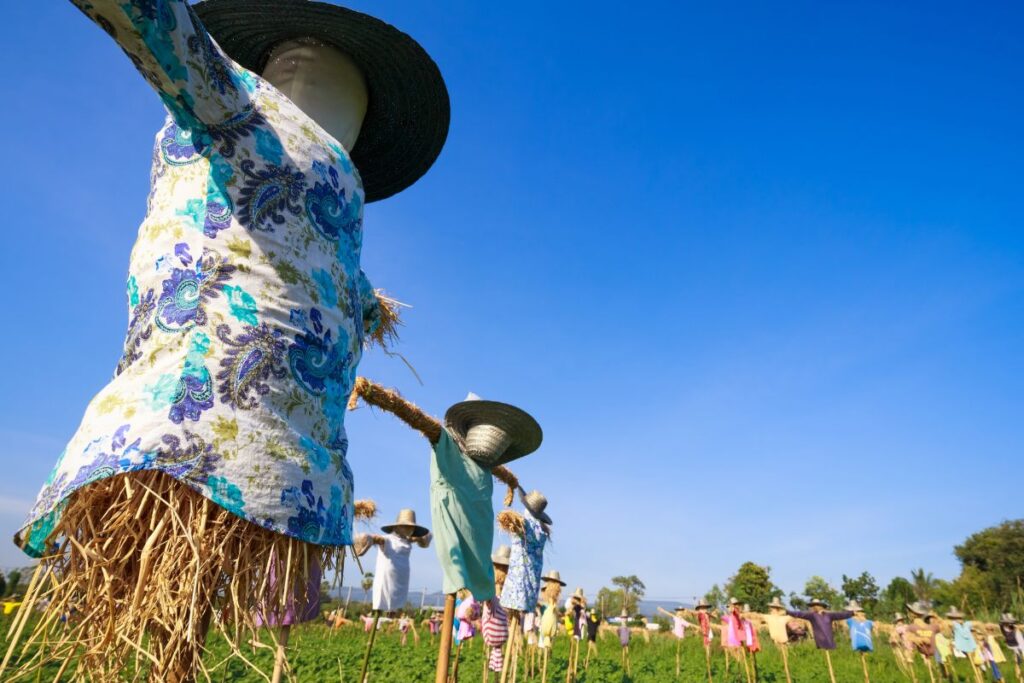
4. The Physics of Balance
Scarecrows need to stand upright to work. This leads us to explore physics, specifically the principles of balance and stability.
Discuss how to make a scarecrow that won’t tip over in strong winds or heavy rain. These are two things that are most likely going to affect your scarecrow.
Some questions to ask:
- How can we distribute the weight of the scarecrow evenly?
- What factors might affect the scarecrow’s balance?
- How can we adjust the scarecrow’s posture to make it sturdy?
Encourage kids to experiment with different postures and positions for the scarecrow and observe how they affect its stability.
This hands-on exploration of physics principles will help students better understand balance and equilibrium.
5. Data Collection and Analysis from Your Scarecrow STEM Project
To add a scientific aspect to your scarecrow STEM activity, consider collecting data on the scarecrow’s effectiveness.
Now, if you have fields to set up your scarecrows, you can collect data on the number of birds that go near each scarecrow and the damage to crops in each area to see which one works better.
However, try a simpler activity if you don’t have fields to test your scarecrows. Record data over a period on how well your scarecrow stands up and doesn’t fall apart. Record the weather (sunny, rain amounts, wind speed) and see how your scarecrow does.
After a set period, gather the data and analyze it.
This provides an opportunity to introduce concepts of data collection, analysis, and drawing conclusions based on evidence—an essential aspect of the scientific method.
6. Scarecrows as Creative Expression
While some kids will love exploring the functional purpose of the scarecrows, others may have more fun with the creative piece. Encourage kids to unleash their artistic talents by decorating their scarecrows.
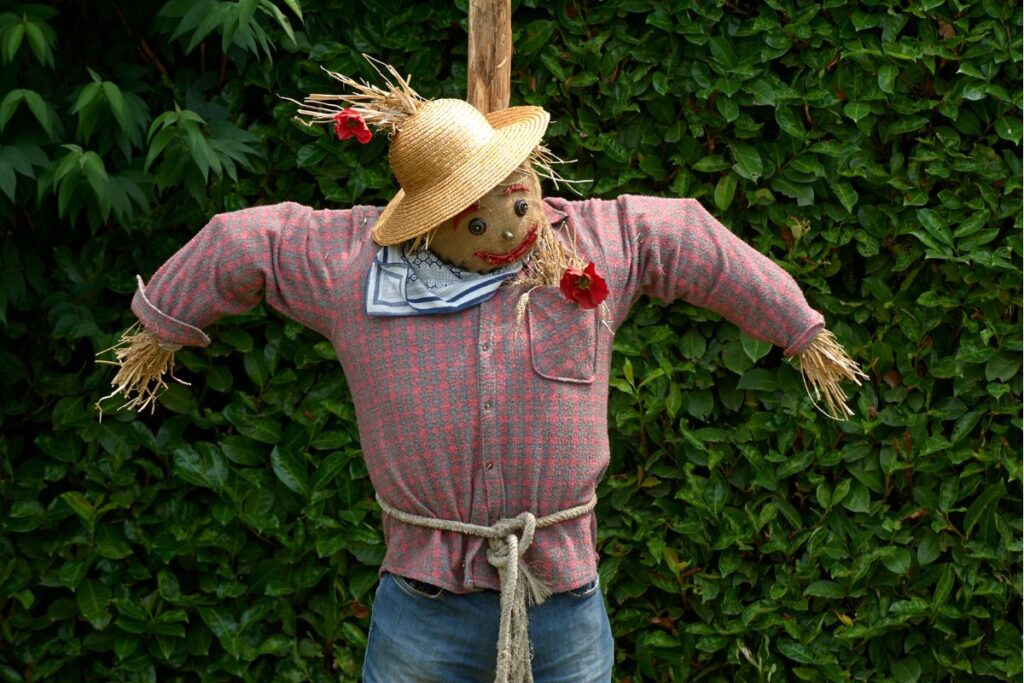
They can paint faces, create clothing designs, or add objects to make unique features. Have them personalize their scarecrows however they like.
The creative aspect may be the most fun for kids because they can use their scarecrows as decorations.
Younger Kids and Scarecrows
If you have younger kiddos that you’d like to do this STEM activity with, you can adjust it to make it easier for them.
First, you can read scarecrow books to kids and talk about why people use scarecrows. Kiddle has a simple explanation for kids on the purpose of scarecrows.
Next, you can brainstorm ways the scarecrow can scare away birds. Make sure they know it is movement that is important, and noise from an aluminum pie pan can help, too. Kids can pick out clothes that can blow in the wind.
After, have the kids come up with how they want to make the face. Do they want to use a sack or old pillowcase to stuff and make a face on? Do they want to try a pumpkin head? Or do they just want a hat on top of the pole?
As a group, gather your materials and put them together. You can make a scarecrow that is on a pole (an adult can do this) or one that sits.
Another option is to use old kid-sized clothes instead of larger adult clothes. That’s what I did with my preschoolers years ago. Ours stayed inside, so we used a paper bag for the head.
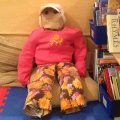
Keep it simple with younger kids.
Scarecrow STEM Fun
Scarecrow STEM activities offer a delightful way to engage students and learners of all ages in exploring the fascinating world of science, technology, engineering, and mathematics.
Whether you’re doing these activities in a classroom, at home, or with a youth group, the hands-on nature of building and observing scarecrows can spark curiosity, encourage critical thinking, and provide valuable real-world connections to STEM concepts.
So, this autumn, why not embrace the STEM magic of scarecrows and take a learning adventure combining science, engineering, mathematics, and creativity?
Happy scarecrow building, and may your crops remain safe for your harvest!
Do you love STEM?
You might also like:
Happy Homeschooling!
